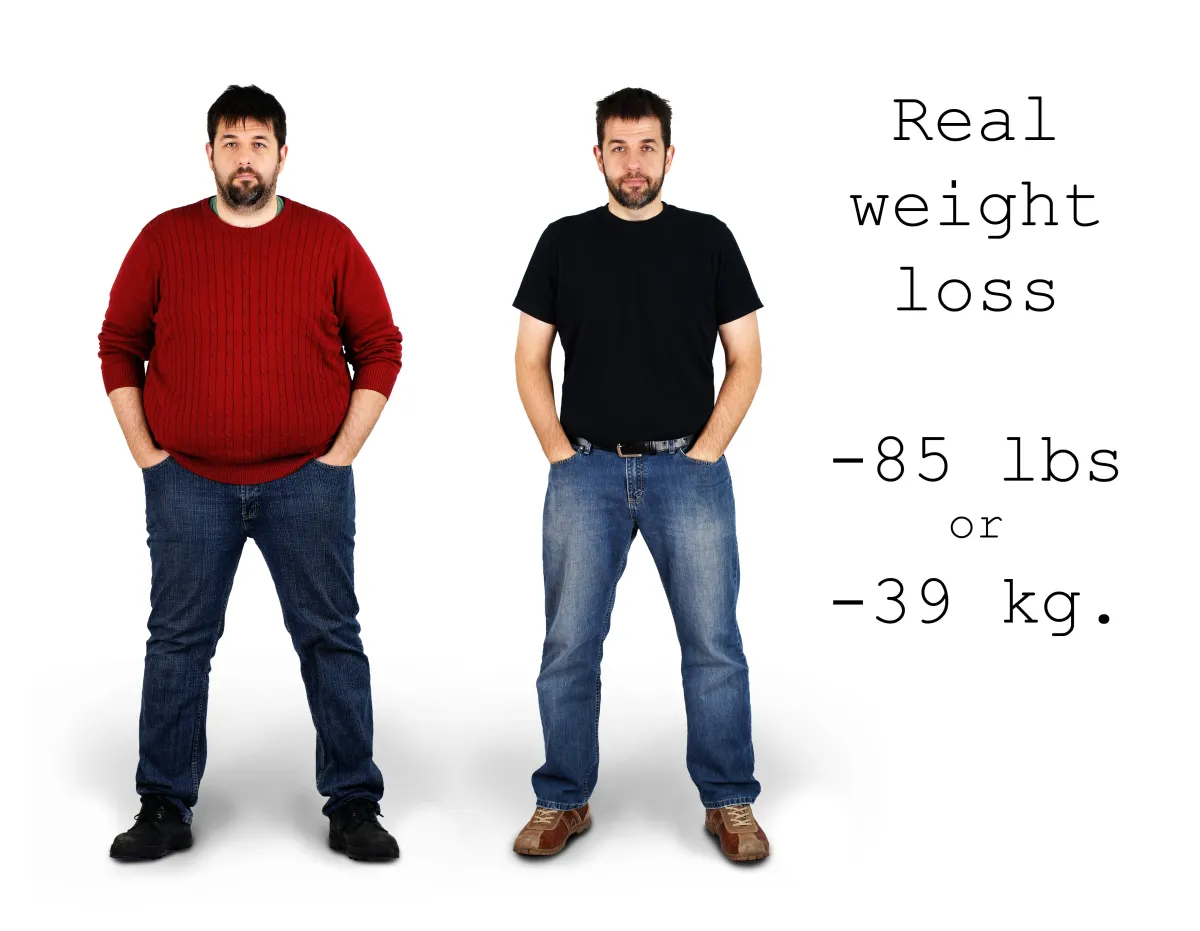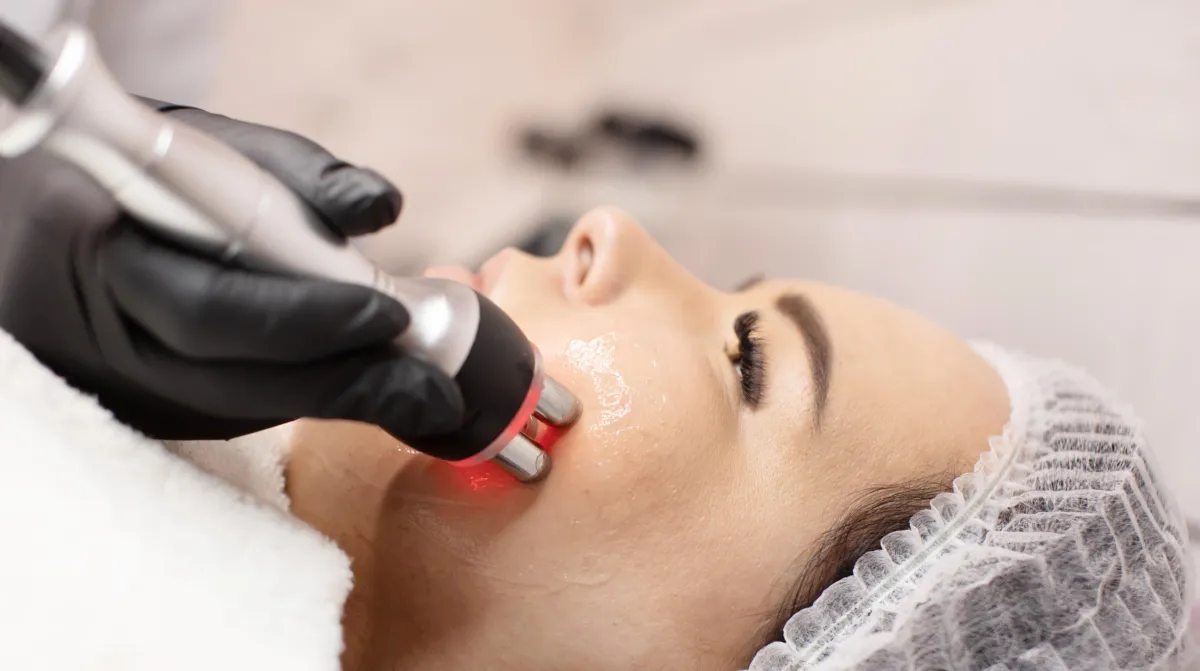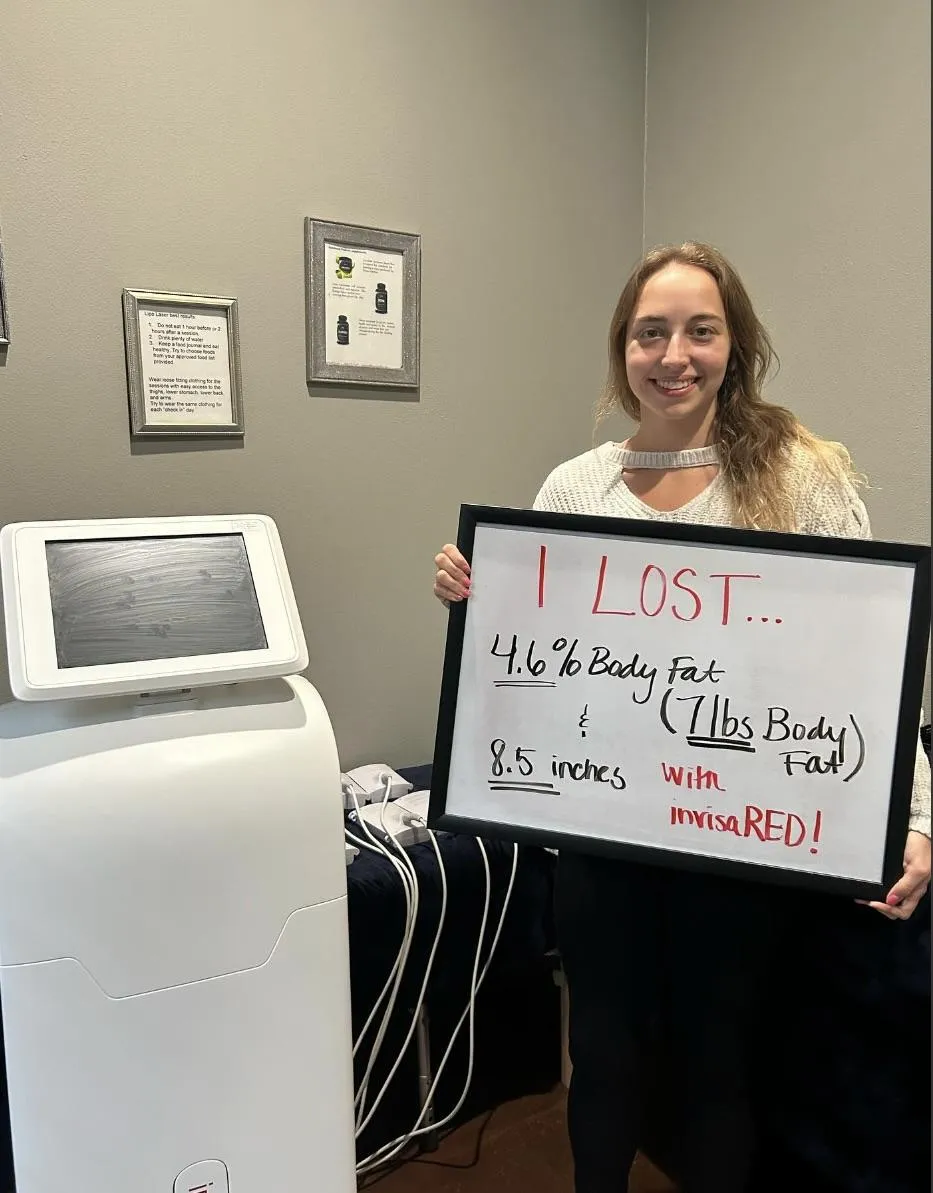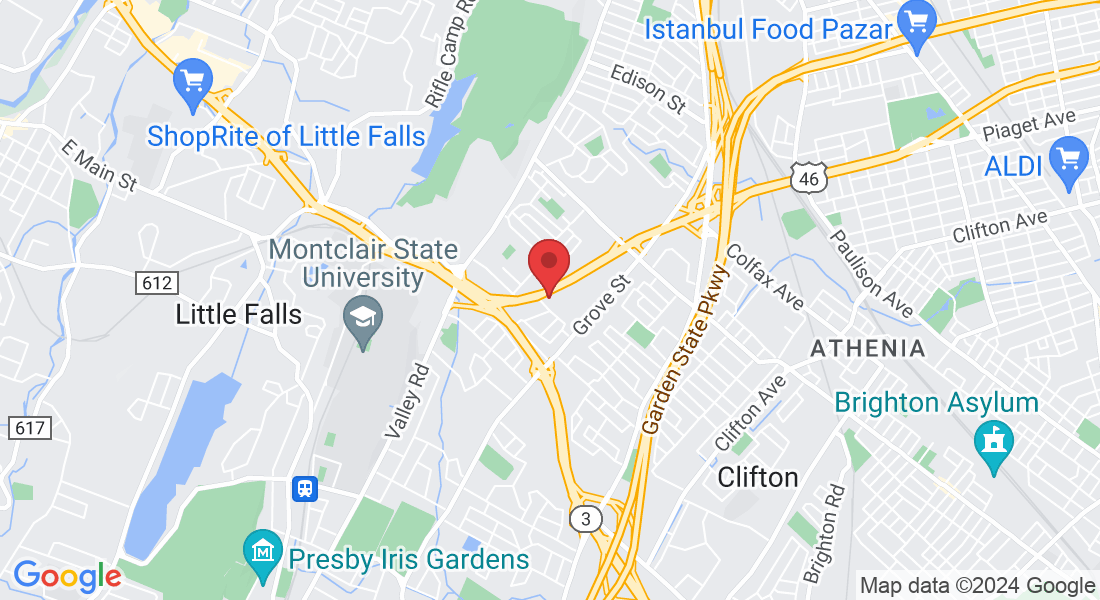WELCOME TO Transformative 360 weight loss clinic
WHY TO CHOOSE US???

SCIENCE BASED APPROACH:
Because muscle has a higher metabolic rate than fat while you're at rest, muscle burns more calories than fat. Even while one pound is still just one pound, its makeup is crucial. In comparison to fat, muscle is more compact. Fat is less dense than muscle. Approximately one-half as much space is occupied by muscle as by fat. The person with a higher body fat percentage will wear a larger size even if they are the same height and weight as the other person. We use Evidenced based protocol first converting your body from fat storing to fat burning mode and we will design program to increase your muscle mass which will eventually increase your metabolism. This will turn your body in fat burning mode. The whole concept is individual specific and customized.
ALL KINDS
OF Weight loss services
One convenient location. Transformative 360 is one of the finest Weight Loss and Med Spa Facility in Hudson County with Conveniently Located at
Bayonne and Jersey City.
WHAT MAKES US DIFFERENT

Modern Equipment
We use the latest medical equipment to deliver top-class cosmetic surgery services.
Qualified Doctors and Staff
We use the latest medical equipment to deliver top-class cosmetic surgery services.
Effective Results
We use the latest medical equipment to deliver top-class cosmetic surgery services.
OUR TEAM


Vineeta Thakkar
Certified Weight Management Specialist

Sunny Thakkar PT, MS
PT & Exercise Physiologist

Dr. Leon Scrimmager
Internal Medicine
OUR FAT TO FIT SERVICES

7 Day Detox

HCG WEIGHT LOSS

SEMAGLUTIDE WEIGHT LOSS

LIPO LIGHT PRO

CYNOSURE

TempSure
Sign Up for Free Consult to se if Transformative360 is right for your Weight Loss Journey

Unlock Your Dream Body: The Ultimate Guide to Non-Invasive Fat Removal Techniques
Unlock Your Dream Body: The Ultimate Guide to Non-Invasive Fat Removal Techniques

Are you tired of stubborn fat that just won't budge, no matter how hard you try? Welcome to the future of body sculpting! In "Unlock Your Dream Body: The Ultimate Guide to Non-Invasive Fat Removal Techniques," we dive deep into innovative solutions that can help you achieve your desired shape without the need for surgery. From cutting-edge cryolipolysis to LED LIGHT therapy discover the science behind each technique and learn how they work to target and eliminate those pesky fat cells. Whether you're looking to refine your silhouette or kickstart your weight loss journey, this guide is your ultimate resource. Join us as we explore the world of non-invasive fat removal and unlock the secrets to a more confident you. Say goodbye to the gym frustrations and hello to a new era of effortless body transformation! Your dream body is just a few clicks away.
Understanding Body Contouring
Body contouring is an umbrella term that refers to a variety of procedures and treatments aimed at reshaping and improving the appearance of the body's silhouette. While traditional methods often involved invasive surgical procedures such as liposuction and tummy tucks, advances in medical technology have introduced a range of non-invasive techniques that promise to reduce fat and contour the body without the need for surgery. This shift has opened up new possibilities for those looking to enhance their physique without the associated risks and recovery time of invasive surgery.
The appeal of non-invasive body contouring is multi-faceted. For many, the prospect of undergoing a procedure that does not involve anesthesia, incisions, or significant downtime is incredibly attractive. These techniques typically use external devices that target and break down fat cells through mechanisms such as cooling, heating, or ultrasound waves. As a result, they offer a less intimidating alternative for individuals who might be apprehensive about surgical interventions but still desire noticeable results.
Moreover, non-invasive body contouring is not just about weight loss. It's about refining and defining the body's shape to achieve a more aesthetically pleasing appearance. Whether it's targeting love handles, the abdomen, thighs, or under the chin, these treatments can help address stubborn fat deposits that are resistant to diet and exercise. Understanding the various options available and how they work is crucial for anyone considering these procedures.

How Non-Invasive Fat Removal Works
Non-invasive fat removal techniques operate on the principle of selectively targeting fat cells while sparing the surrounding tissues. The primary goal is to induce the breakdown of fat cells through various mechanisms, including freezing, heating, or mechanical disruption. Once the fat cells are destroyed, the body’s lymphatic system naturally processes and eliminates the cellular debris over time, resulting in a gradual reduction of fat in the treated area.
These cells undergo apoptosis or necrosis, releasing their contents (mostly triglycerides and cell debris) into the surrounding tissue.
Released triglycerides are broken down into free fatty acids and glycerol.
These are either used by nearby cells for energy or picked up by immune cells (macrophages).
The lymphatic system absorbs cell debris, fluids, and waste products (including broken-down fat components).
It moves this waste through lymphatic vessels toward lymph nodes, where it's filtered and partially processed.
The filtered waste is eventually transported to the bloodstream, then sent to the liver for metabolism.
The liver breaks down the remaining fat content, and it’s excreted via urine, sweat, and feces.
The effectiveness of these treatments depends on several factors, including the technology used, the skill of the practitioner, and the individual's unique physiology. Most non-invasive fat removal techniques require multiple sessions to achieve optimal results. The body needs time to process and eliminate the destroyed fat cells, and the gradual nature of fat reduction ensures that the results appear natural.

Benefits of Choosing Non-Invasive Methods
Non-invasive fat removal techniques offer numerous benefits, making them an appealing option for many individuals looking to enhance their body contour. One of the most significant advantages is the minimal downtime associated with these treatments. Unlike surgical procedures, which often require a lengthy recovery period, non-invasive methods allow patients to resume their normal activities almost immediately. This convenience is particularly valuable for those with busy schedules who cannot afford to take extended time off work.
Another key benefit is the reduced risk of complications. Surgical fat removal procedures, such as liposuction, carry inherent risks, including infection, scarring, and anesthesia-related complications. Non-invasive techniques, on the other hand, eliminate many of these risks by avoiding incisions and anesthesia. The treatments are generally well-tolerated, with most patients experiencing only mild, temporary side effects such as redness or swelling.
Non-invasive fat removal methods also offer a more gradual and natural-looking transformation. Because the fat reduction occurs over several weeks or months, the results are less dramatic and more in line with the body's natural contours. This gradual change can be less jarring and more aesthetically pleasing, helping individuals achieve their desired look without the abrupt alterations that can occur with surgery.

What to Expect During Your Treatment
Undergoing a non-invasive fat removal treatment typically involves several steps, from the initial consultation to the actual procedure and follow-up care. Understanding what to expect can help individuals feel more comfortable and prepared for the experience.
Initial Consultation
The process begins with a consultation with a qualified practitioner. During this visit, the practitioner will assess the individual's body, discuss their goals, and determine the most suitable treatment options. The consultation is an opportunity to ask questions, understand the procedure, and set realistic expectations. The practitioner will also review the individual's medical history to ensure they are a good candidate for the chosen treatment.
Treatment Session
On the day of the treatment, the individual will be guided through the process by the practitioner or a trained technician. The procedure typically takes place in a comfortable clinical setting. Depending on the specific technique, the treatment may involve the application of a device to the target area. For cryolipolysis, a cooling applicator is placed on the skin, while ultrasound or radiofrequency treatments may involve the use of a handheld device that delivers energy to the fat cells.
Most non-invasive fat removal treatments are relatively quick, lasting between 30 minutes to an hour per session. The procedure is generally well-tolerated, with most individuals experiencing only mild discomfort, such as a sensation of cold, warmth, or tingling. The practitioner will monitor the individual throughout the session to ensure comfort and safety.
Post-Treatment
After the treatment, individuals can typically resume their normal activities immediately. Some mild side effects, such as redness, swelling, or bruising, may occur but usually resolve within a few days. The practitioner will provide specific post-treatment care instructions to optimize results and minimize any discomfort. It is important to stay hydrated, maintain a healthy diet, and engage in regular physical activity to support the body's natural processes in eliminating the destroyed fat cells.

Post-Treatment Care and Maintenance
Proper post-treatment care is essential to maximize the results of non-invasive fat removal and maintain the improved body contour. While the procedures themselves require minimal downtime, adhering to a few guidelines can enhance the effectiveness of the treatment and ensure long-lasting outcomes.
Immediate Aftercare
Immediately after the treatment, it is important to follow any specific instructions provided by the practitioner. This may include avoiding strenuous exercise, hot baths, or saunas for a short period to allow the body to recover and reduce the risk of swelling or bruising. Wearing compression garments may be recommended for certain treatments to support the treated area and enhance the body's natural healing processes.
Hydration and Diet
Staying well-hydrated is crucial after non-invasive fat removal treatments. Drinking plenty of water helps the body flush out the destroyed fat cells and supports overall health. A balanced diet that includes a variety of nutrients can also aid in maintaining the results. Avoiding excessive consumption of fatty or sugary foods can prevent new fat deposits from forming and help sustain the improved body contour.
Physical Activity
Engaging in regular physical activity is beneficial for overall health and can help maintain the results of non-invasive fat removal. While the treatments target specific fat deposits, maintaining a healthy weight and body composition requires a combination of a balanced diet and regular exercise. Incorporating both cardiovascular and strength-training exercises can enhance muscle tone and further refine the body's shape.
Follow-Up Treatments
Depending on the specific technique and the individual's goals, follow-up treatments may be necessary to achieve optimal results. Non-invasive fat removal methods often require multiple sessions spaced several weeks apart. The practitioner will provide a treatment plan tailored to the individual's needs. Regular follow-up appointments allow the practitioner to monitor progress and make any necessary adjustments to the treatment plan.
Long-Term Maintenance
To maintain the results over the long term, it is important to adopt a healthy lifestyle. Consistent habits such as a nutritious diet, regular exercise, adequate hydration, and stress management can help prevent the accumulation of new fat deposits. Staying mindful of lifestyle choices and making adjustments as needed can ensure that the benefits of non-invasive fat removal are enjoyed for years to come.
OPENING HOURS
Mon–Fri
10:00am–7:00pm
Saturday - 8:00 AM -12 PM
APPOINTMENTS
The first step towards a healthy life is to schedule an appointment. Please contact our office by phone or complete the appointment request form.
Contact us through text or call
Call us!



